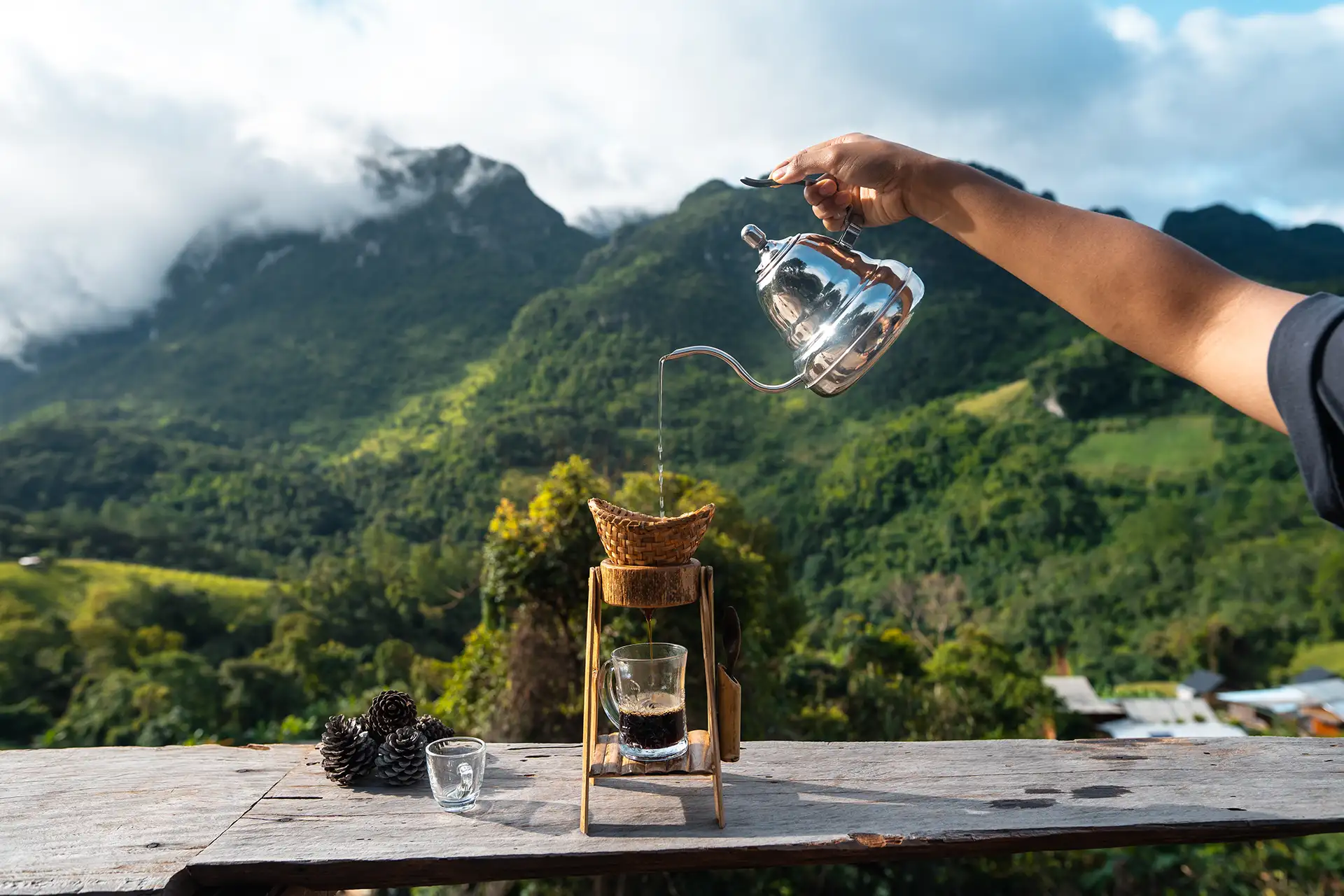My Cart
No products in the cart.

Grab a bag of expertly roasted coffee and study the label. You’ll find details like its origin, region, tasting notes, and—for single-origin beans—the elevation above sea level (m.a.s.l.).
What’s the significance?
Pop the question to your barista, and they’ll likely tell you that high-elevation coffee equates to higher quality.
But hold your beans – it’s not as simple as that. Let’s dive into the true meaning of elevation in the world of coffee.
Higher altitudes produce coffee with sweeter, more sophisticated flavors, but it’s not because of altitude itself. The key to unlocking superior coffee lies in temperature.
When the temperature drops, coffee trees slow their growth. The cherries that house the beans we roast and savor develop at a more leisurely pace, granting them ample time to cultivate intricate coffee profiles.
However, this refinement comes at a cost: fewer cherries, higher maintenance, and delayed harvests. Striking a balance is crucial – coffee thrives neither in sweltering heat nor icy cold.
Nevertheless, the general consensus holds true: coffee grown in cooler climes reigns supreme in taste.
In cooler climates, pests and diseases find it harder to flourish. Take coffee leaf rust, a fungus that blights coffee plant leaves, hindering photosynthesis and healthy growth. Its ideal temperature range is 21–25°C/70–77°F.
Similarly, the coffee berry borer has caused millions of dollars of damage and thrives in warmer temperatures (20–30°C/68–86°F).
Coffee farms outside these temperature ranges—usually found at higher altitudes—are less susceptible to coffee leaf rust, the coffee berry borer, and other pests that struggle in cooler conditions.
So, when asked why elevation matters, it’s tempting to oversimplify and say “the higher, the better.” But it’s not always that clear-cut.
Latitude influences temperature, as does elevation. Take Colombia, known for its exquisite, high-altitude coffee. Farms in areas like Nariño, just 100 miles from the equator, sit at 2,300 m.a.s.l., resulting in high acidity, sweetness, and a pronounced aroma—creating an exceptional coffee experience.
Contrastingly, in Cerrado Mineiro, Brazil, farms are at significantly lower elevations (800-1,300 m.a.s.l.), over fifteen times farther from the equator. The Association of Brazilian Coffee Producing Regions reports an average temperature of 23°C, ideal for coffee cultivation.
Why then, should we disregard coffee grown at, say, 1,100 m.a.s.l., where temperatures remain relatively cool?
Latitude alone does not dictate local temperature.
The Galápagos Islands, straddling the equator with farms at a mere 200-300 m.a.s.l., enjoy temperatures comparable to Cerrado Mineiro due to the Humboldt Current carrying cold air from Chile and Peru. Coffees from here boast a balanced sweetness, medium body, and caramel notes.
Elevation is an unfair scale. While it is often used as an indicator of coffee quality, without knowing latitude, local climate, and more – it becomes meaningless.
It can be useful when applied to coffee farms in a specific region but should not be used to compare beans from far regions. For example, Hawaiian and Venezuelan beans or Indonesian and Yemeni beans.
So why do most people rely on elevation instead of temperature?
Simply put, temperature fluctuates drastically across seasons, even within a single day or hour. And even if the elevation scale is imperfect, we need to know how quickly the coffee beans grew. It affects the coffee’s flavors, aromas, and ideal roast profile.
